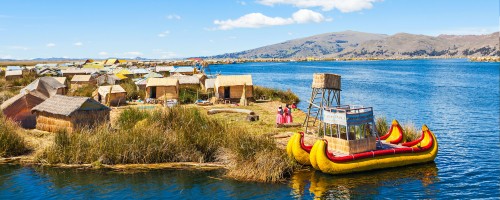The Historic Sanctuary of Machu Picchu is one of the 7 Wonders of the Modern World but also a protected natural area, which besides housing an important historical legacy, protects an extraordinary biodiversity. Its more than 80,000 acres, with forested areas, steep mountains, summits and snow-capped mountains, is home to a wide variety of animal and plant species.
The Urubamba River crosses from east to west to form a deep canyon; and due to its location, between the Andes and the Amazon, this natural area allows the presence of microclimates which are a source of great biological diversity.
Mammals such as the Andean fox, puma, vizcacha, añuje (dasyproctidae), coati, spectacled bear and white-tailed deer, among others, can all be found here. With respect to birds, more than 420 species have been identified, including the rock cockerel, Andean condor, torrent duck and the endemic Inca wren. The sanctuary of Machu Picchu is in addition home to 377 species of butterflies, 15 types of amphibians and 25 types of reptiles, 9 of which are types of lizards and 16 are snakes.
A great range of orchids also grow in the Historical Sanctuary of Machu Picchu, flowers with complex shapes and singular beauty. More than 400 species have been recorded in this location, although it is estimated that there are probably more than 1,000.
Did you know?
• Machu Picchu was declared a Mixed World Heritage Site (natural and cultural) by UNESCO in 1983.
• This natural area has a dry and cold climate in the high Andean zone, being temperate and humid in the jungle brow zone. The rainy season is from November to March, although there may be fogs or showers all year round.
